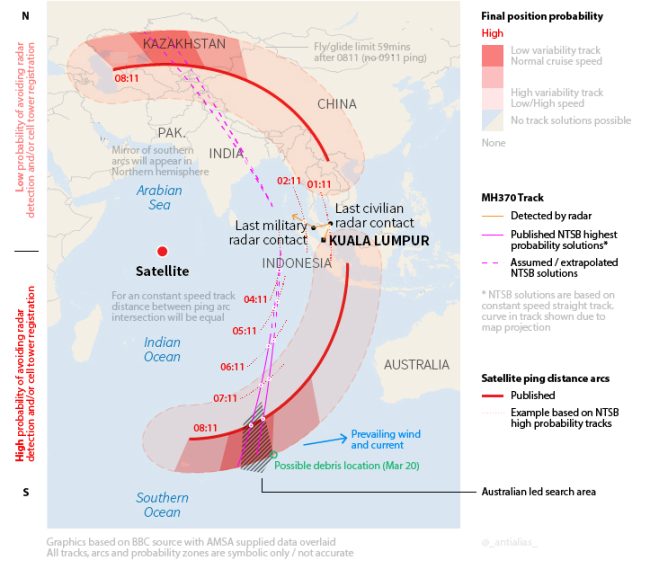On SciCast, we’ve posted three questions about the missing plane. Can crowdsourcing help to locate it?
Dr. Charles Twardy, Project Principal, explains the different ways to crowdsource a search. “When a community turns out to help look for a lost child, that’s crowdsourcing,” he says. “The community volunteers typically aren’t as well-prepared as the search teams, but when directed by experienced Field Team Leaders, they can greatly extend the search effort. Similarly, experimental micro-tasking sites like TomNod.com let volunteers help search piles of digital images. Call it the effort of the crowd. SciCast is about the wisdom of the crowd: weighing the vast amounts of uncertain and conflicting evidence to arrive at a group judgment, of say the relative chances of several regions or scenarios. This could be as simple as an average - a robust method with much to recommend it when judgments are independent. Or it could be something more advanced, like SciCast’s combinatorial prediction market. A market reduces double-counting, and may be better suited to the case where most of us are just mulling over the same information, but a few have real insight. The trick is to find a large and diverse crowd, and persuade them to participate.”
Following are the questions. Click any of them to make your forecast (register or login first). Also, see the discussion and background tabs of each question for more details and links to news sources.
Where will the Malaysia Airlines Flight MH370 be found?
What happened to Malaysia Airlines Flight MH370?
Where will Malaysian Air Flight MH 370 be found (extended version)?
The extended search region uses this map.
See this blog post for info on how to explore conditional probabilities.
Click here to read more about approaches to crowdsourcing Search & Rescue.

